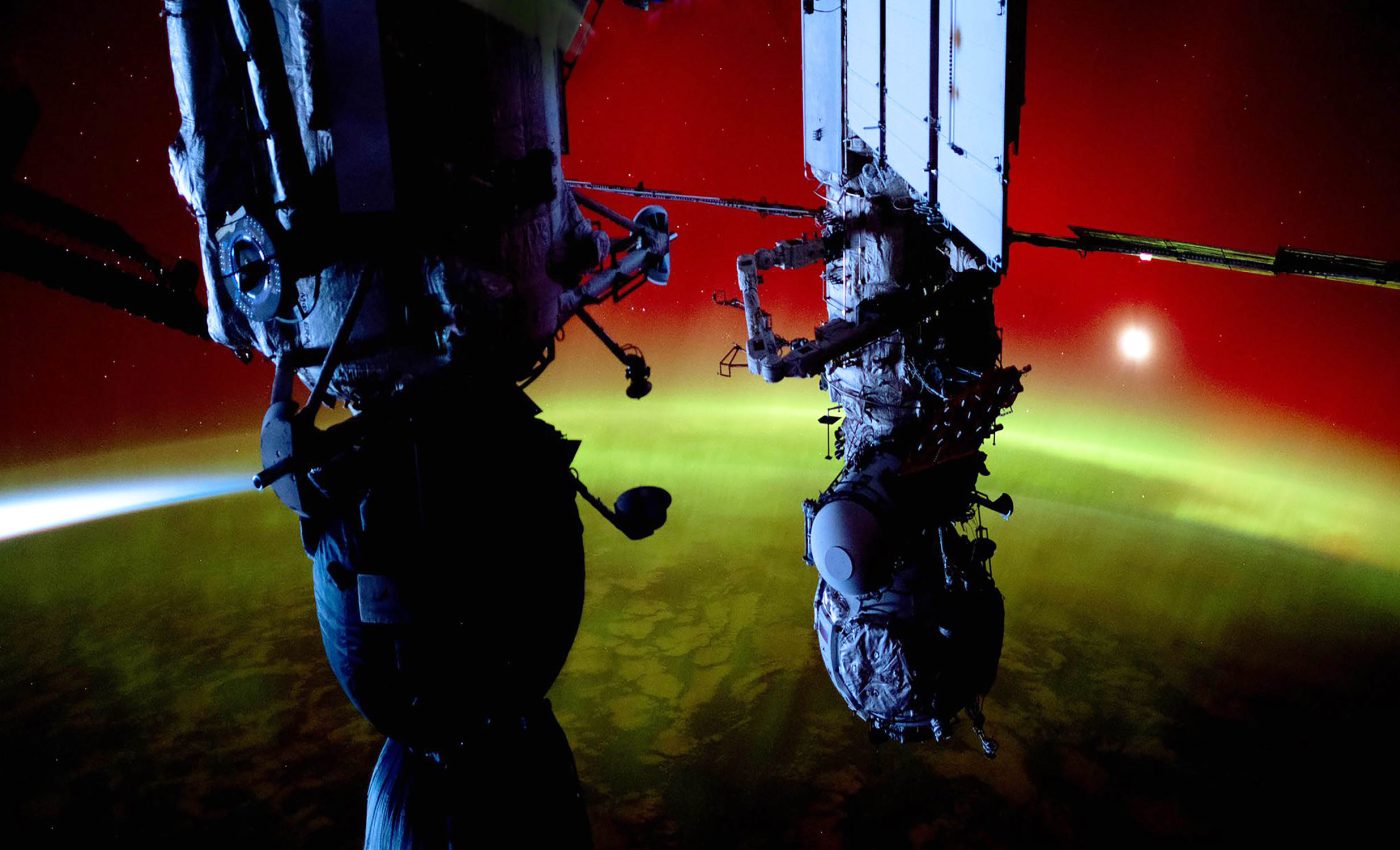
Solar storm triggered stunning auroras worldwide and from space
The aurora borealis lit up the night sky as solar cycle 25 reached its peak, with the Sun’s bustling activity sending energy into Earth’s atmosphere.
This event transformed a calm night into a spectacular light show, with vibrant colors of green, pink, and red dancing across the sky on October 10, 2024.
Breathtaking auroras after a silent storm
For those beyond the Arctic Circle and deep into the mid-latitudes, it was a rare visual treat – a breathtaking celestial spectacle that transcended time and space.
At 1:55 a.m. Eastern Time (05:55 Universal Time) on October 11, the NOAA-20 satellite’s VIIRS (Visible Infrared Imaging Radiometer Suite) captured this captivating event.
Using advanced filtering techniques, the tool observed signals like city lights, reflected moonlight, and, of course, the magnificent auroras.
Atmospheric compounds at different latitudes
The snapshot of the northern lights presented them as bands of white sweeping across parts of Minnesota, Wisconsin, and Michigan in the U.S, and significant provinces in Canada.
However, the dynamic nature of the auroras meant that different coverage and patterns of light were witnessed at different times throughout the night.

While the satellite data captured the lights in grayscale, the on-ground spectators were enthralled by colors ranging from the most common green to rare purples and reds — a palette crafted by the atmospheric compounds found at different altitudes.
Adding to the Earthly perspective, an astronaut aboard the International Space Station shared an image of the aurora.
The photo captured the vibrant green hues of the aurora weaving across the planet’s crust, topped with a layer of deep red light.
Solar storm behind the auroras
This dazzling spectacle was the aftermath of a severe geomagnetic storm – a turmoil in the upper atmosphere triggered by pressure waves and electromagnetic energy from the Sun interacting with Earth’s magnetic field.
The culprit was an energized material from the Sun, known as a coronal mass ejection, which erupted in synchronization with an intense solar flare on October 8, 2024.
Solar flares, although reaching the planet in a matter of minutes and interfering with radio communications, are different from coronal mass ejections, which take several days to journey to Earth.
These coronal mass ejections, carrying a large amount of plasma from the Sun’s corona and an embedded magnetic field, interact with Earth’s upper atmosphere to produce the enchanting auroral displays. NOAA’s Space Weather Prediction Center ranked this storm 4 out of 5 in severity.
Storm ignites pink and green auroras
The aurora was a sight to behold from various parts of the globe, including latitudes where witnessing an aurora is usually rare. Its appearance in areas far from the poles added an extra layer of excitement for those lucky enough to catch a glimpse.
Auroras perform high in the atmosphere, enabling observers to potentially witness them from afar. These dancing lights, caused by charged particles colliding with Earth’s atmosphere, created an ethereal glow that extended across the night sky.
Awe-struck spectators from Nevada, North Carolina, Arizona, and Texas shared photographs of this breathtaking phenomenon.
The National Weather Service in Lubbock, Texas, even shared pictures of the aurora illuminated in shades of pink and green, which is a truly rare sight for that region.
Cultural and historical significance
For centuries, the aurora borealis has fascinated people around the world. Many cultures once viewed these lights as mystical, attributing them to spirits or celestial beings.
The Norse, for instance, imagined Valkyries riding across the sky, while the Inuit believed the auroras were souls playing games.
No matter the interpretation, these lights have always sparked awe and curiosity throughout human history.
Today, auroras continue to inspire us – not just as a scientific marvel but as a symbol of nature’s untamed beauty.
The event earlier this month reminds us of the delicate yet powerful connection between our planet and the Sun, and how solar activity can turn our skies into a living canvas.
Whether viewed from the northern latitudes or as far as the southern U.S., the aurora borealis remains one of the most awe-inspiring natural spectacles in the world.
—–
Like what you read? Subscribe to our newsletter for engaging articles, exclusive content, and the latest updates.
Check us out on EarthSnap, a free app brought to you by Eric Ralls and Earth.com.
—–













